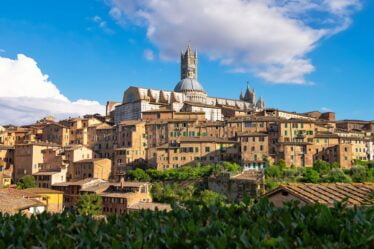
The great flood of 1966 in Florence was a devastating natural disaster that impacted the city profoundly. On November 4, 1966, after days of intense rain, the Arno River overflowed, causing one of the worst floods in Florence’s history. Floodwaters reached up to 20 feet (6 meters) in some areas, submerging the historic city center, damaging art, archives, homes, and businesses.
The flood had a disastrous impact on Florence’s priceless artistic heritage. Renowned sites like the Uffizi Gallery, Ponte Vecchio, and Basilica di Santa Croce suffered severe damage. Notably, artworks and manuscripts were lost, damaged, or covered in mud and oil from heating tanks that spilled during the flood. Some iconic pieces, such as Giorgio Vasari’s Last Supper and Donatello’s wooden crucifix, were nearly destroyed.
The 1966 flood also spurred an unprecedented international effort to save Florence’s cultural heritage. Volunteers, known as “Angeli del Fango” (Mud Angels), came from around the world to help restore and clean artworks and books. This response is often cited as a turning point in art conservation history, leading to improved techniques for preserving art and documents.
The legacy of the flood remains a significant part of Florence’s modern history, both as a moment of crisis and a testament to the resilience and solidarity of the global community. The disaster also prompted efforts to protect the city from future floods, including strengthened flood barriers and regular riverbed maintenance, though the Arno still poses a potential risk to Florence.
The damage from the 1966 flood in Florence was extensive and deeply impactful, with both human and cultural costs:
1. Loss of Life and Displacement
- The flood claimed around 101 lives across Tuscany, though Florence itself had fewer casualties.
- Thousands of people were displaced from their homes, with over 30,000 left homeless due to the destruction of residential areas.
2. Art and Cultural Heritage
- Florence is home to countless priceless artworks and historical manuscripts, many of which were gravely affected by the flood.
- Over a million rare books and manuscripts were damaged or destroyed. This included ancient texts, historical records, and one-of-a-kind documents.
- More than 14,000 artworks and artifacts were severely damaged, including masterpieces in galleries, churches, and private collections.
- Famous pieces such as Giorgio Vasari’s Last Supper and Donatello’s wooden crucifix in Santa Croce were submerged under water and mud. These were nearly irreversibly damaged and required decades of careful restoration.
3. Historical Buildings and Monuments
- Many historical buildings, including the Basilica di Santa Croce, Uffizi Gallery, Pitti Palace, and Ponte Vecchio, were flooded.
- Ponte Vecchio, Florence’s famous bridge lined with jewelry shops, narrowly escaped structural collapse but suffered significant water damage. Some of the smaller bridges in Florence were destroyed.
- The Arno River waters reached up to 20 feet in some places, submerging basements, ground floors, and even some first floors of buildings throughout the historic city center.
4. Damage to Libraries and Archives
- The National Central Library of Florence, housing one of Italy’s most extensive collections, suffered catastrophic losses.
- Approximately one-third of its entire collection, including rare and ancient manuscripts, was either destroyed or significantly damaged.
- Thousands of documents, many centuries old, were soaked in polluted waters, leaving them covered in mud and fuel oil from burst heating tanks.
5. Economic Impact
- The total economic damage in Florence was estimated at hundreds of millions of dollars (in 1966 values), a sum that would be substantially higher today.
- Thousands of businesses, shops, and artisans in the historic center faced significant financial loss. Many small shops, especially those dealing in traditional crafts, were forced to close due to the extensive damage and financial strain.
6. Environmental Impact
- The flood caused severe soil and environmental contamination, as mud and debris spread across Florence.
- Heating oil from damaged boilers seeped into the floodwaters, covering buildings, artworks, and streets, complicating the cleanup and restoration processes.
The flood of 1966 remains a historic event in Florence, symbolizing both tragedy and resilience. The “Mud Angels” (Angeli del Fango), volunteers who came from across Italy and around the world to help rescue and restore art and books, are remembered as heroes. The aftermath spurred the establishment of more robust systems and networks dedicated to preserving and restoring art, marking a new era in art conservation.



